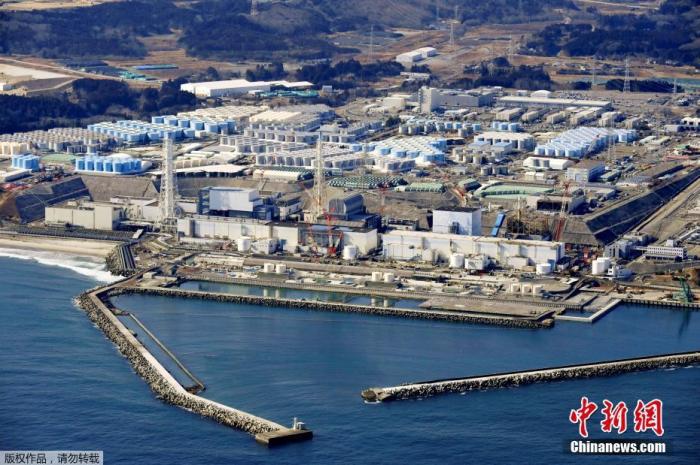China News Service, May 27. According to Kyodo News on the 26th, Japan’s Tokyo Electric Power Company is considering transferring about 30,000 tons of nuclear sewage from storage tanks to determine radioactive substances in preparation for discharge into the sea.
Data map: Fukushima Daiichi Nuclear Power Plant in Japan.
Previously, fishery related personnel had asked for additional storage tanks to continue to store nuclear sewage, but the Japanese government and TEPCO refused to adopt this opinion on the grounds that there was no space in the plant area and the site required for reactor scrapping operations.
The “Multi-Nuclide Removal Equipment” (ALPS) that purifies the polluted water of the First Nuclear Power Plant should be able to remove radioactive materials other than tritium, but for a period of time it was operated with priority treatment speed, and most nuclear sewage still contained radioactive materials exceeding the standard. .
TEPCO will use ALPS to purify nuclear sewage again, and after confirming that it is below the standard value, it will be diluted with seawater and discharged.
According to relevant sources, the re-purified nuclear sewage needs some storage tanks for temporary storage before and after the radioactive substance is measured, so the existing storage tanks will be used.
On March 11, 2011, a magnitude 9.0 earthquake occurred in the waters near Fukushima Prefecture, Japan.
Affected by this, the cores of units 1 to 3 of the Fukushima Daiichi Nuclear Power Plant operated by TEPCO melted down.
TEPCO continues to inject water into the containment of Units 1 to 3 to cool the reactor core and recover sewage.
As of March 2021, the nuclear power plant has produced 1.25 million tons of nuclear-contaminated water, and the amount is still increasing.
On April 13, the Japanese government formally decided to discharge the above-mentioned nuclear sewage into the sea after being filtered and diluted.
Emissions will begin in about two years, and the emission period is expected to last 20 to 30 years.

